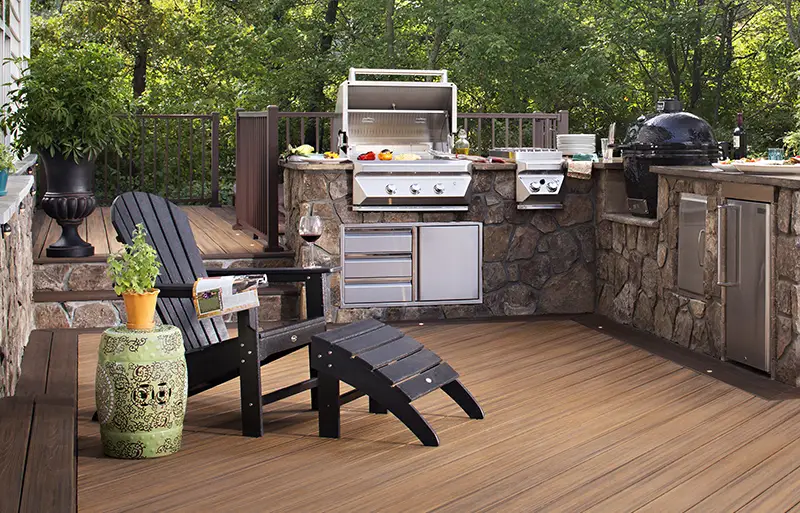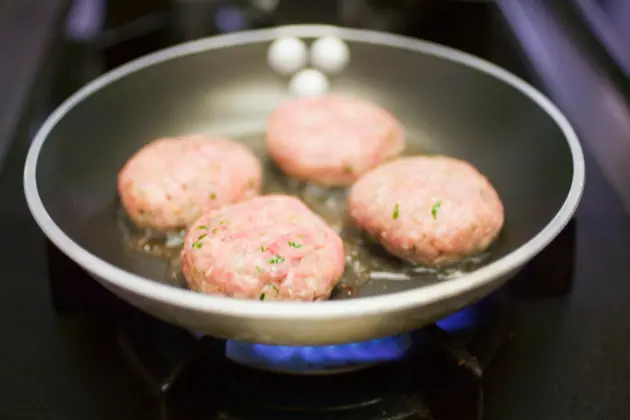While parchment paper is commonly used in baking to prevent sticking and promote easy cleanup, there is some debate about whether it is safe to use in a glass baking dish. According to several sources, including home chefs and kitchen experts, it is generally safe to use parchment paper in a glass baking dish. However, there are a few considerations to keep in mind to ensure optimal results.
Key Takeaways
- Parchment paper is generally safe to use in a glass baking dish.
- Pay attention to the heat resistance of both the parchment paper and the glass dish.
- Preheat the glass dish along with the oven to avoid thermal shock.
- Using parchment paper in a glass baking dish provides a non-stick surface and even heat distribution.
- Alternatives to parchment paper for glass baking dishes include greasing with butter or using silicone baking mats.
Safety Considerations for Using Parchment Paper in a Glass Baking Dish
When it comes to using parchment paper in a glass baking dish, there are a few safety considerations to keep in mind. The first is to pay attention to the heat resistance of both the parchment paper and the glass dish. Most parchment paper is safe for use at temperatures up to 450°F, which is suitable for most baking applications. However, it’s important to note that glass baking dishes can withstand high temperatures, but they may be prone to thermal shock if exposed to sudden temperature changes. To avoid the risk of cracking or shattering, it is recommended to preheat the glass dish along with the oven and avoid extreme temperature differentials.
Another consideration when using parchment paper in a glass baking dish is the proper placement of the paper. It’s important to ensure that the paper is placed flat against the bottom and sides of the dish to prevent it from sliding or folding during baking. This will help to ensure even heat distribution and promote better baking results.
Lastly, it is always a good idea to follow the manufacturer’s instructions for both the parchment paper and the glass baking dish. Different brands may have specific guidelines for safe use, so it’s worth taking the time to read and understand them.
Summary:
- Pay attention to the heat resistance of both the parchment paper and the glass baking dish.
- Preheat the glass dish along with the oven to avoid thermal shock.
- Place the parchment paper flat against the bottom and sides of the dish for even heat distribution.
- Follow the manufacturer’s instructions for both the parchment paper and the glass baking dish.
| Consideration | Solution |
|---|---|
| Heat resistance | Ensure parchment paper and glass baking dish can handle the desired baking temperature. |
| Thermal shock | Preheat the glass dish along with the oven to avoid sudden temperature changes. |
| Paper placement | Place parchment paper flat against the bottom and sides of the dish for optimal results. |
| Follow instructions | Read and follow the manufacturer’s guidelines for both the parchment paper and the glass baking dish. |
Benefits of Using Parchment Paper in a Glass Baking Dish
Using parchment paper in a glass baking dish offers several benefits that can enhance your baking experience. Firstly, it provides a non-stick surface that makes it easier to remove your baked goods without any residue or sticking. This is especially useful when working with delicate items like cookies or pastries, where you want to ensure they maintain their shape and presentation.
In addition to its non-stick properties, parchment paper helps distribute heat evenly throughout the baking dish. This means that your baked goods will be more consistently cooked, resulting in a better overall texture and taste. No more worrying about uneven browning or undercooked centers!
Another advantage of using parchment paper in a glass baking dish is that it acts as a protective barrier between the food and the dish itself. This can reduce the risk of over-browning or scorching, particularly when baking dishes that require longer cooking times or higher temperatures. The parchment paper acts as a shield, allowing the heat to be evenly distributed while preventing direct contact between the food and the glass.
Table: Benefits of Using Parchment Paper in a Glass Baking Dish
| Benefits | Description |
|---|---|
| Non-stick surface | Prevents baked goods from sticking to the glass dish |
| Even heat distribution | Ensures consistent baking results throughout the dish |
| Protective barrier | Reduces the risk of over-browning or scorching |
Overall, using parchment paper in a glass baking dish can help improve the quality of your baked goods. Whether you’re a seasoned baker or just starting out, parchment paper is a valuable tool that can make your baking process easier and more enjoyable. So go ahead, line your glass baking dish with parchment paper and reap the benefits!
Tips for Using Parchment Paper in a Glass Baking Dish
Using parchment paper in a glass baking dish can be a game-changer in your baking endeavors. To ensure the best results, here are some helpful tips to keep in mind:
1. Choose the right size: When lining your glass baking dish with parchment paper, make sure to cut it to the appropriate size. The paper should fit snugly inside the dish without overlapping the edges. This will prevent any excess paper from burning or interfering with the baking process.
2. Prepping the parchment paper: Before placing the parchment paper in the glass dish, crumple it up into a ball and then flatten it out again. This will help the paper adhere to the shape of the dish more easily, ensuring a better fit and minimizing the chances of it curling or lifting during baking.
3. Secure the corners: To keep the parchment paper in place while pouring in the batter or dough, you can use a small amount of butter or cooking spray to secure the corners of the paper to the dish. This will prevent any shifting or wrinkling, giving you a smooth and even surface for baking.
4. Adjust baking time and temperature: When using parchment paper in a glass baking dish, it may slightly affect the baking time and temperature. Keep a close eye on your baked goods and consider reducing the oven temperature by 25 degrees Fahrenheit. Additionally, you may need to shorten the baking time slightly to avoid overcooking or browning.
By following these handy tips, you can confidently use parchment paper in your glass baking dish and enjoy the many benefits it offers.
Alternatives to Parchment Paper for Glass Baking Dishes
If you prefer not to use parchment paper in a glass baking dish, there are several alternatives you can consider. One option is greasing the dish with butter or cooking spray, although this may result in a slightly different texture. Simply apply a thin layer of butter or cooking spray to the inside of the glass dish, ensuring all surfaces are well-coated. This will help to prevent sticking and make cleanup easier. However, it’s important to note that greasing the dish may not provide the same level of non-stick properties as parchment paper.
Another alternative to parchment paper is using silicone baking mats. These mats are made from food-grade silicone and offer similar non-stick properties as parchment paper. Simply place the silicone mat in the glass baking dish before adding your batter or dough. The silicone mat will prevent sticking and make it easier to remove your baked goods. One of the advantages of silicone baking mats is that they can be reused multiple times, making them a more sustainable option. However, like greasing the dish, silicone mats may not provide the same level of protection and heat distribution as parchment paper.
When considering alternative options to parchment paper, it’s important to keep in mind that each method may produce slightly different results. Experimentation may be required to find the method that works best for your specific baking needs. Whether you choose to use greased glass baking dishes or silicone baking mats, it’s always a good idea to monitor your baked goods closely during the cooking process to ensure they are baking evenly and avoiding any over-browning or scorching.
Remember, the use of parchment paper in a glass baking dish is generally safe and offers several benefits such as non-stick properties and even heat distribution. However, if you decide to explore alternatives, greasing the dish with butter or cooking spray, as well as using silicone baking mats, can be effective options. Ultimately, the choice is yours, and it’s important to find the method that suits your preferences and baking style.
FAQ
Can I use parchment paper in a glass baking dish?
According to several sources, including home chefs and kitchen experts, it is generally safe to use parchment paper in a glass baking dish. However, there are a few considerations to keep in mind to ensure optimal results.
What should I consider when using parchment paper in a glass baking dish?
When using parchment paper in a glass baking dish, it is important to pay attention to the heat resistance of both the paper and the dish. Preheating the glass dish along with the oven and avoiding extreme temperature differentials can help prevent cracking or shattering.
What are the benefits of using parchment paper in a glass baking dish?
Using parchment paper in a glass baking dish provides a non-stick surface, even heat distribution, and acts as a protective barrier between the food and the glass dish, reducing the risk of over-browning or scorching.
Any tips for using parchment paper in a glass baking dish?
To achieve the best results, you can consider cutting the parchment paper to fit the dish, ensuring it covers the bottom and sides completely. It is also recommended to lightly grease the dish before placing the parchment paper to prevent it from sliding.
Are there alternatives to parchment paper for glass baking dishes?
If you prefer not to use parchment paper, alternatives include greasing the dish with butter or cooking spray, or using silicone baking mats that offer similar non-stick properties. However, these alternatives may not provide the same level of protection and heat distribution as parchment paper.

